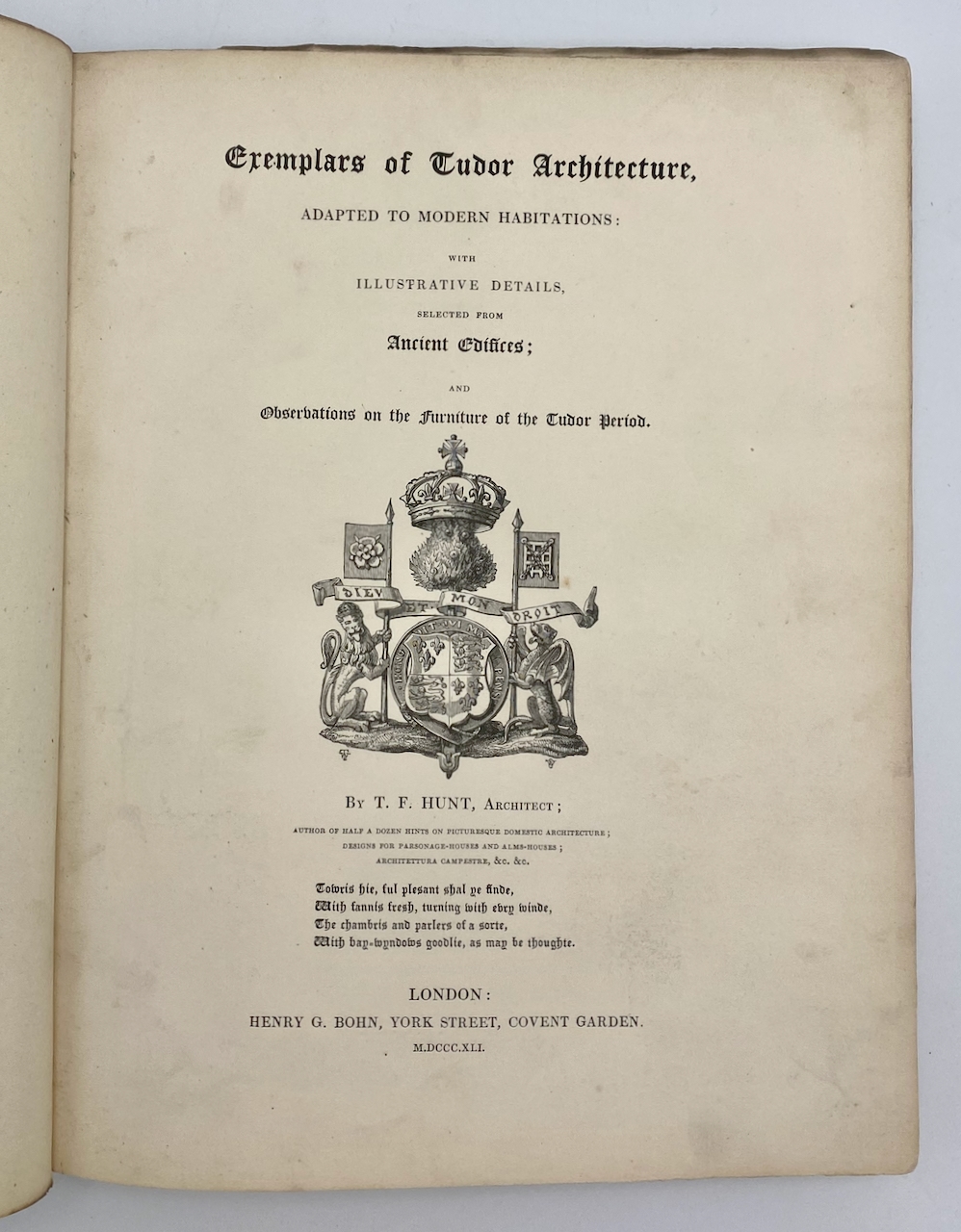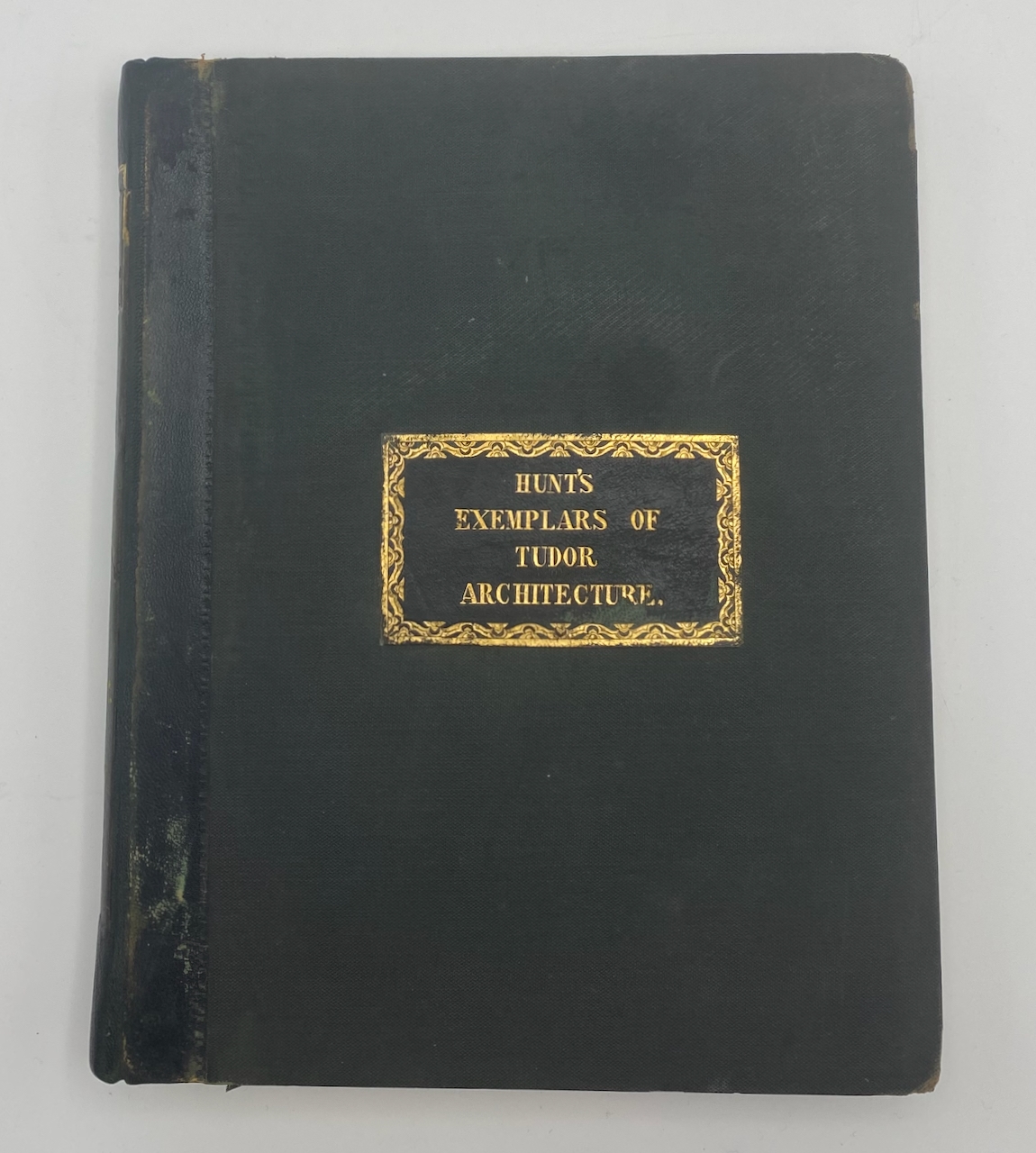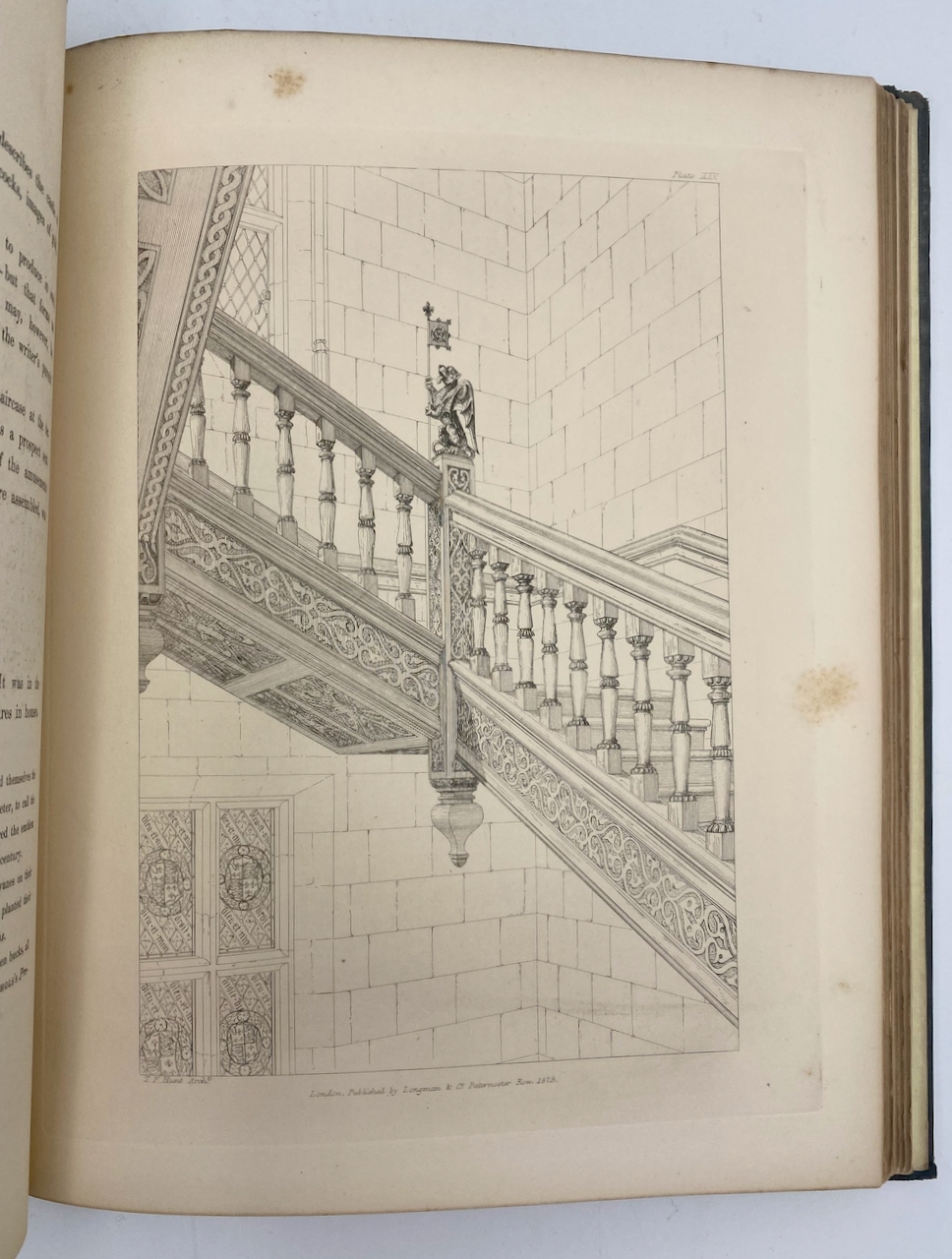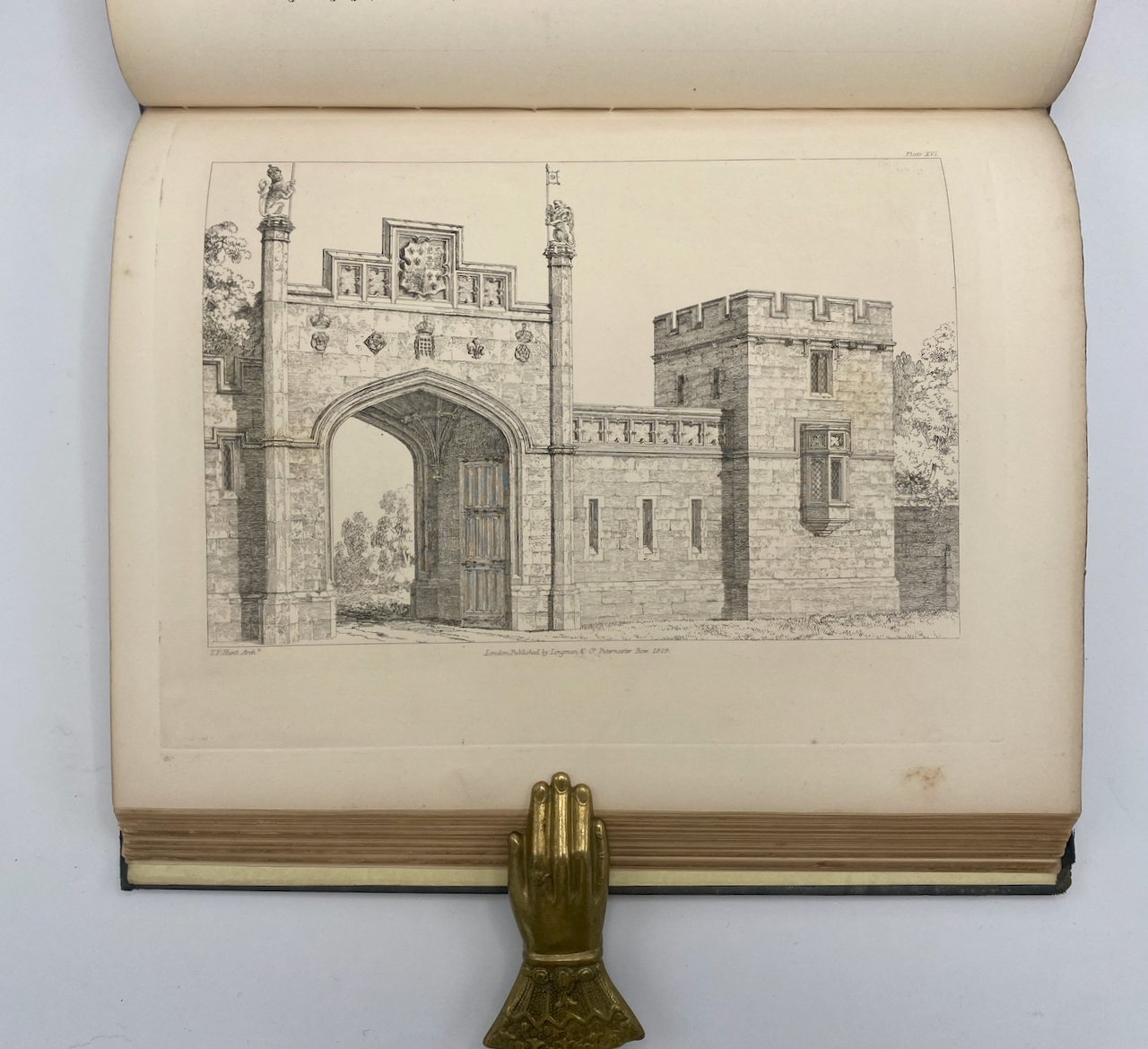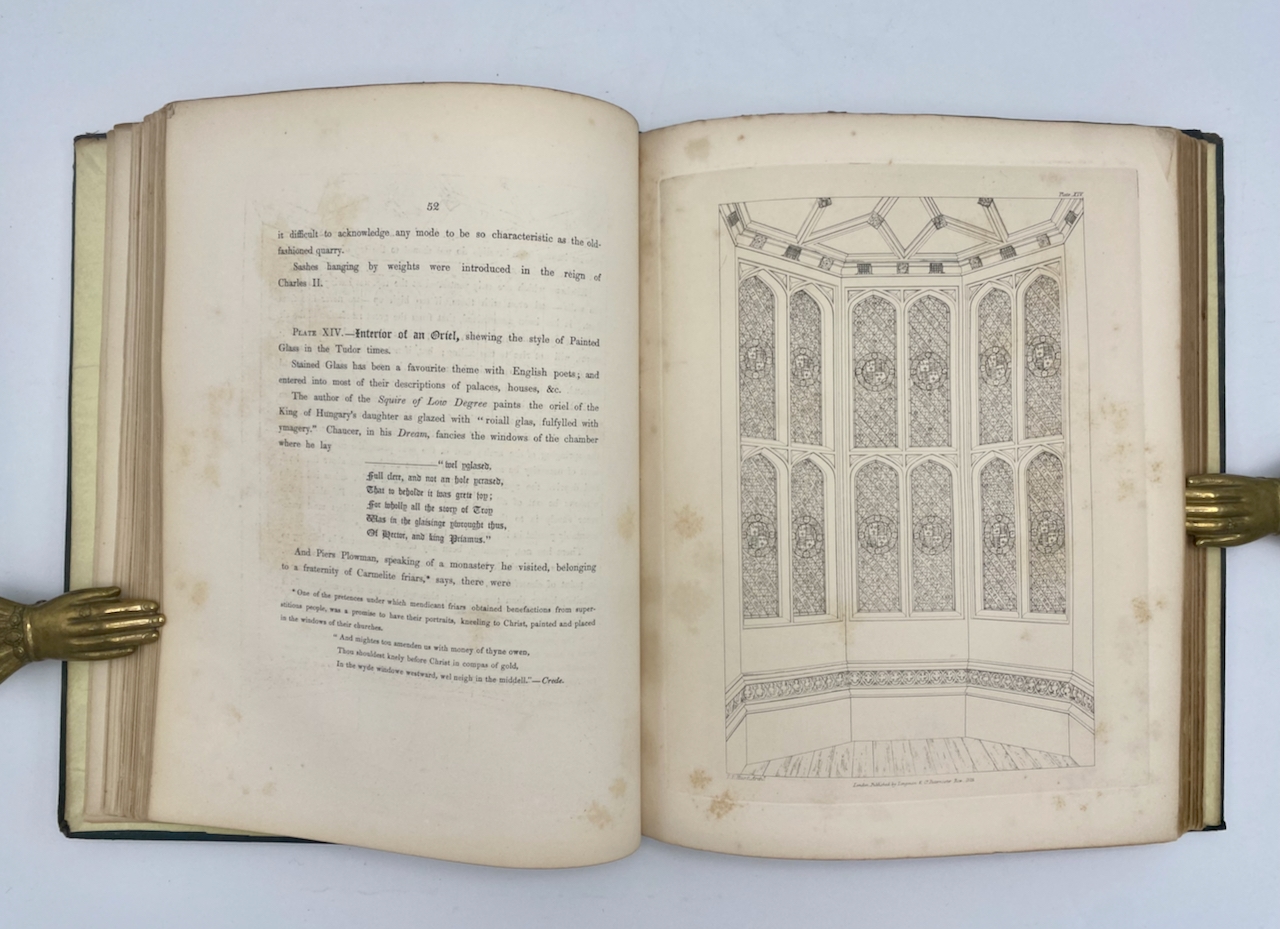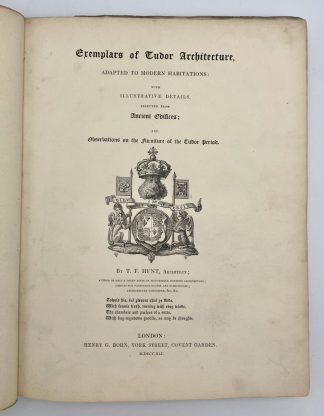HUNT, T.F.
FIRST COLLECTION OF ‘MOCK-TUDOR’ ARCHITECTURE
Exemplars of Tudor Architecture adapted to modern habitations.
London, Henry G. Bohn, 1841.£250.00
Folio. pp. [5], vi-viii, [1]-193, [7] + 37 leaves of plates. Wood-engraved royal arms to title, 37 engraved plates by T.F. Hunt illustrating plans and elevations of largely modern buildings in Tudor style, furniture, and plaster decorations. Foxing to some plates, mostly marginal. A very good, well-margined copy in contemporary quarter green morocco over cloth boards, gilt-lettered title label to upper board, spine gilt-lettered, detached, spine remounted. Label of B.T. Batsford, Scientific Bookseller, 52 High Holborn, London, to front pastedown.
An excellent copy of the third edition of this handsomely illustrated work on the application of Tudor architectural designs to contemporary buildings – ‘the first collection of designs entirely in Tudor style’ (Archer, p.101). T.F. Hunt (1791-1831) worked as an architect for the Board of Works, overseeing the restoration of St James’ and Kensington Palace. He published several works advocating the use of the ‘Old English’ (especially Tudor) style in modern buildings, which he considered ‘still the most applicable for English habitations’. ‘Exemplars’ remarked both on the picturesque character and the practical usefulness of the Tudor style. The preface introduces Tudor mansions through architectural accounts and examples, discussing structures, wood-panelling, glass, and furniture. The following sections include plans and elevations of modern buildings in Tudor style, such as a mansion, cloister, gate-house, grange, and even a dog kennel, each with an explanation, e.g., the use of bricks and stone, decorations (e.g., heraldic animals), roof shapes, and portals. The engravings also include some specimens of Tudor furniture, e.g., a cypress chest, and plaster decorations. ‘Hunt frequently commented on the original functions of individual features in Tudor times, and used quotations from Shakespeare and other contemporary authors to add some of the flavour of the period. Such a concern for historical context was rare in British architectural literature’ (Archer, p.446). A most interesting work.
Archer 155.3. This ed. not in BAL.

